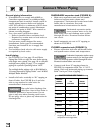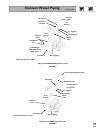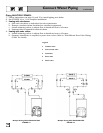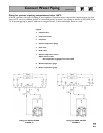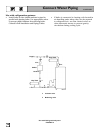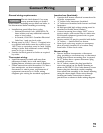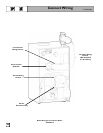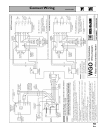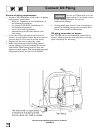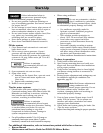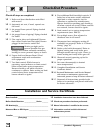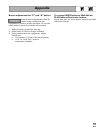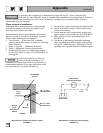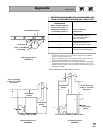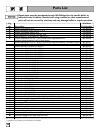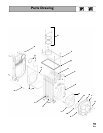
General oil piping requirements:
• Location and installation of oil tanks, oil piping
and burners must follow:
— NFPA 31, Standard for the Installation of
Oil-Burning Equipment.
— In Canada, CSA B139, Installation of
Oil-Burning Equipment.
— Local codes and regulations.
— Information provided with burner and
fuel pump.
• If any part of fuel oil tank is above level of
burner, an anti-siphon device must be used to
prevent flow of oil in case of oil line break.
• Support oil lines as required by codes.
• Make tank connections with swing joints or
copper tubing to prevent breaking in case the
tank settles. Make swing joints so they will
tighten as tank settles. Non-hardening pipe joint
compounds should be used on all threads.
Do not use Teflon tape as an oil
pipe sealant. It can cause valves
to fail, creating hazards. Do not use
compression fittings.
• Underground pipe must be run in a casing to
prevent oil leaking into ground or under floor.
Check local codes for information.
Oil piping connection at burner:
See FIGURE 16 for recommended connection at
burner, allowing burner mounting door to swing
open completely for servicing.
Connect Oil Piping
Recommended Oil Piping Connection to Burner
FIGURE 16
22



